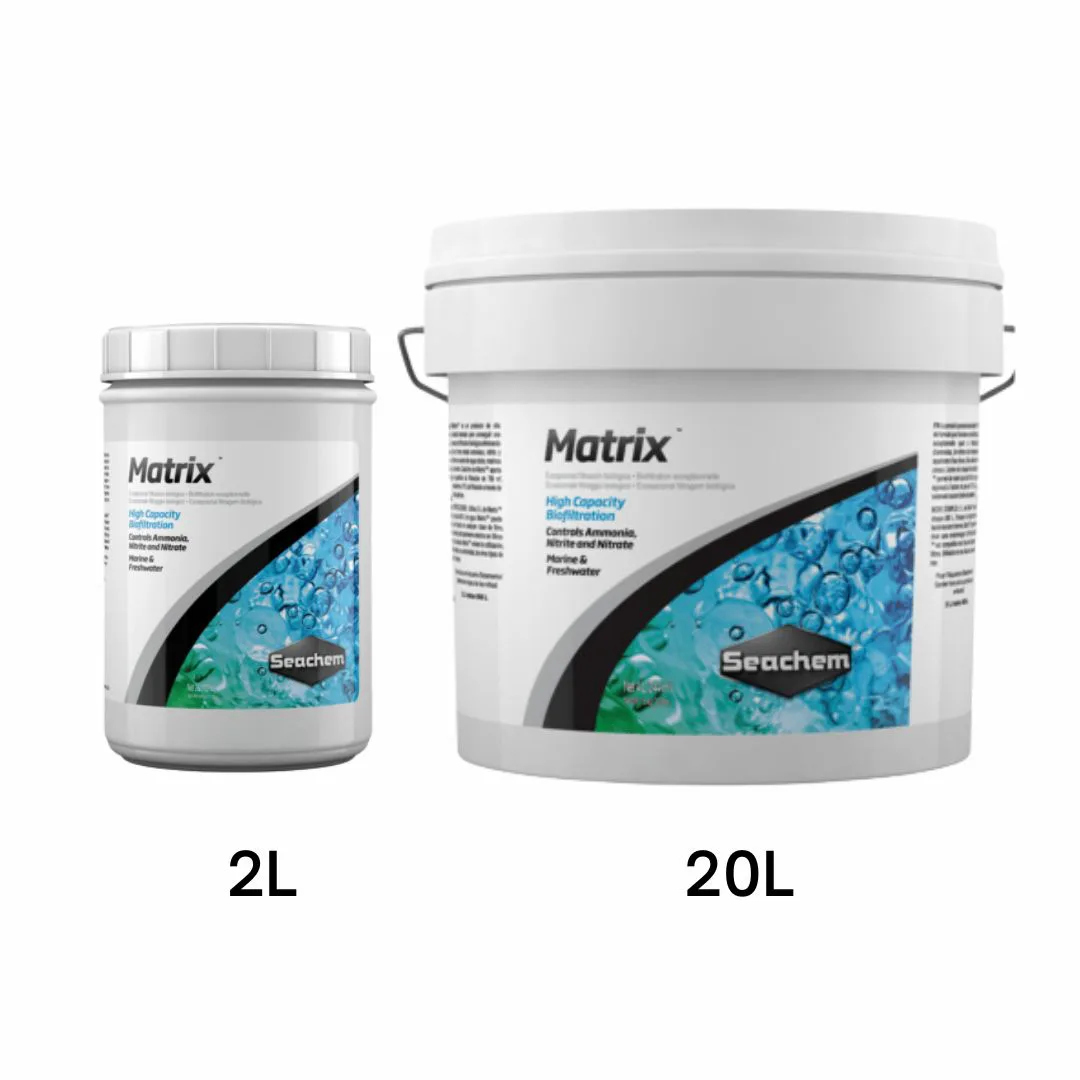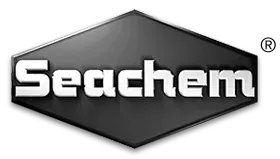SEACHEM MATRIX
Seachem Matrix
- High capacity Biofiltration
- Controls ammonia, nitrite, and nitrate
- Highly porous – enormous surface area (>~700 m2/L)
- Supports aerobic and anaerobic bacteria species
₹618.00 – ₹18,779.00
Seachem Matrix
Matrix™ is a high porosity biomedia that provides efficient biofiltration for the removal of nitrogenous waste. Matrix™ is a porous inorganic solid about 10 mm in diameter. Each liter of Matrix™ provides as much surface (>~700 m2) as 170 liters of plastic balls! Plastic bio-materials provide only external surface area, whereas Matrix™ provides both external and internal macroporous surface area. These macropores are ideally sized for the support of nitrifying and denitrifying bacteria. This allows Matrix™, unlike other forms of biomedia, to remove nitrate along with ammonia and nitrite, simultaneously and in the same filter.
Matrix™ is completely inert and will not breakdown. It need not be replaced. Since the majority of the bacteria are internal, Matrix™ may be rinsed when needed without damaging the filter. Matrix™ is compatible with all types of wet or wet-dry filters.
Directions
Use 250 mL of Matrix™ for each 200 L (50 US gallons)** of water. Matrix™ may be placed in any kind of filter, and is particularly effective in a canister filter. Matrix™ is sufficiently large that no filter bag should be required for most applications. Matrix™ works well in drip tray systems, but you may find that the larger Pond Matrix™ is better suited for such applications. Use with Stability® to more rapidly establish the bio-filter.
**This dosage may differ from your packaging. Based on updated studies, we’ve found Matrix™ treats even more water than previously asserted.
Surface Area of Matrix, Eheim Substrat Pro, and JBL MicroMec
Two competitors, Eheim (Substrat Pro) and JBL (MicroMec) have advertised their own biological filter media (in both cases, sintered glass) and are claiming larger specific surface areas than our claim for Matrix.
For biological filter media, specific surface area (measured as surface area per gram of material, or surface area per some specified volume of material) is very important. These products provide surface sites for bacteria to attach and do their work. The greater the surface area per gram of medium, the greater the number of bacteria that can attach. Thus a high specific surface area is desirable.
There is a second consideration, and that is the size of the pores in the medium. Generally, with very large pore diameters, we have smaller specific surface area, so that is not good. This generally rules out pores above 10 microns in diameter. But we can go too far in the other direction. If we have a very large number of very, very small pores, then our specific surface area number will be phenomenal, but the medium will not work very well as a biological medium. This is due to physical limitations, specifically too small a volume to support bacterial growth, and the decreasing efficiency of fluid transport (necessary to carry nutrients to the bacteria and waste away from the bacteria) with very small pore sizes. (Small pores still play important roles in physical and chemical processes, such as adsorption.)
BET surface area measurements indicate that Seachem Matrix contains nearly 10 times the specific surface area of Substrat Pro, and more than 20 times the specific surface area of MicroMec. Practically all the specific surface area of both Substrat Pro and MicroMec are in the range of pore diameters to be biologically useful, while some of the surface area of Seachem Matrix is in pores that are reserved for physical and chemical processes, not biological processes. Estimates from two different pore geometries indicate that Seachem Matrix contains between 4 to 4.5 times the biologically active surface area of Substrat Pro, and between 8 to 9 times the biologically active surface area of MicroMec.
| Weight | 2 kg |
|---|---|
| Dimensions | 15 × 15 × 20 cm |
| Size |
250ml ,500ml ,1L ,2L ,4L ,20L |
Only logged in customers who have purchased this product may leave a review.





Reviews
There are no reviews yet.